I’m sometimes skeptical when I go to a place that makes 10-15 (or more) different types of wine. How can you really get the best out of that many varietals? Often, they can’t and we end up with two or three good wines with the rest ranging from OK to mediocre. So when you see a producer really hone in on a handful of varietals, you (or at least I do) have a greater expectation that they are going to bring out the best in those varietals. Enter Gary Farrell Pinot Noir and it’s all-in commitment to this notoriously finicky variety.
Some Background
Gary Farrell, a true Russian River pioneer, made his first wine (a Pinot Noir) from the famed Rochioli Vineyard back in 1982. He was actually the first winemaker for Rochioli Vineyards and in one of the early years, he was actually paid in grapes. Seems like it all worked out. In those early years, Gary worked alongside other future Russian River pioneers such as Davis Bynum, Joe Rochioli, Joe Swan – all names we associate with quality Russian River wine today. Though he sold his namesake winery, the current ownership is just as committed to crafting exceptional, cool-climate Pinot Noir and Chardonnay.
To be sure, the bulk of Gary Farrell’s production is Chardonnay and Pinot Noir with a bottle or two of Sauvignon Blanc and Zinfandel in any given vintage. And while they do make some really nice Chardonnay (see me with my mind blown for one of their Chardonnays) I’d say that where they really excel is with Pinot Noir. Gary Farrell has, and is known for producing small lots of varietally expressive and regionally distinctive Russian River Valley Pinot Noir.
And what an appellation the Russian River is. One of the hallmarks of the region is its climate which is characterized by cool breezes and fog from the nearby Pacific Ocean which blankets the area most mornings and evenings. The fog and wind temper the warmer summer temperatures which slows the grape ripening process and allows for a longer (and more even) growing season. This allows for both ripened fruit as well as nice levels of acidity – both of which contribute to great Pinot.

But like anything else in wine, there are ebbs and flows. There was a time when the Russian River Valley was on the lips of many Pinot Noir lovers and others times where this was not the case. Yes, there is certainly some big extracted “California-Style” Pinot Noir out there, but what’s so great about the Russian River is the extent of its geological and climatic diversity. One wine does not speak for the entirety of the Russian River Valley. More than anything, a producer’s approach to winemaking will often lead you where you want to go.
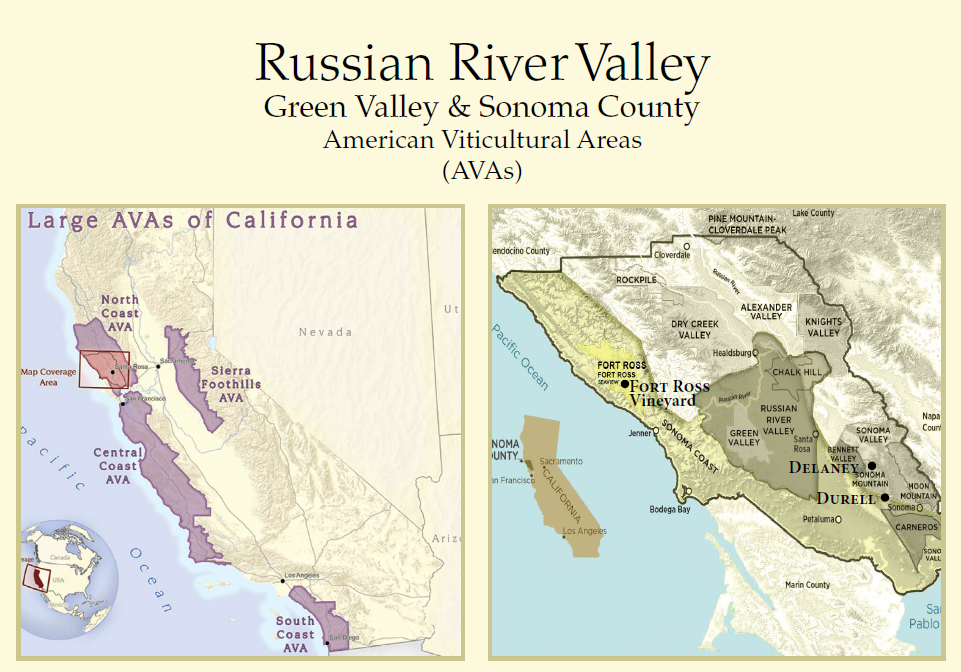
I had the absolute pleasure of spending some time (virtually of course) with winemaker Theresa Heredia who’s been the winemaker at Gary Farrell since 2012. 1
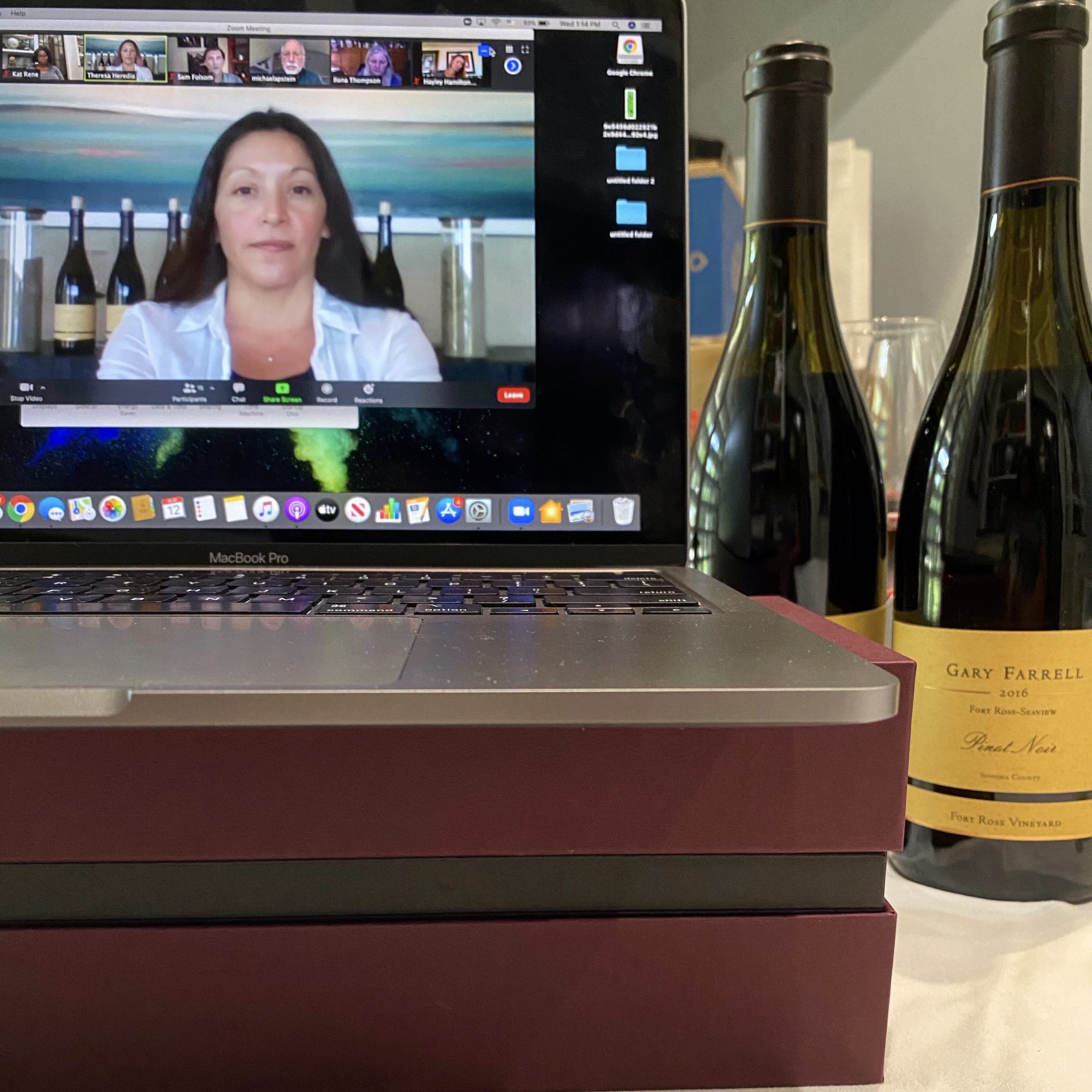
She brought with her, her experience working with cool-climate, small-lot, single-vineyard Chardonnay and Pinot Noir. And I absolutely love her story. She went to UC Davis to get a PhD in Chemistry but ended up switching to the enology program when she met some enology students while grading papers with them as a graduate assistant. How cool and forwarding thinking was that?! For her it was an opportunity to use the chemistry knowledge she had and apply it to wine, which she also loved. And apparently the wine world agrees as she was previously named “Winemaker to Watch” by the San Francisco Chronicle, reflecting her interest in wines that offer a pure expression of their vineyard site and her willingness to experiment with different winemaking techniques.
And if scores are a thing for you, know that Theresa has earned over 400 90+ scores for her Gary Farrell wines. Additionally, under Theresa’s tutelage Gary Farrell has been a real standout. It was named the 2015 Winery of the Year by Pinot Report and 2016 Winery of the Year by Pinot File. It’s 2015 Russian River Valley Selection Chardonnay was named the #1 wine of the year by Wine Enthusiast in 2017. And in 2019, Gary Farrell was named a Top 100 Winery of the Year by Wine & Spirits Magazine.
The Wines
I was able to taste seven single vineyard expressions of Gary Farrell Pinot Noir side-by-side and all from the same vintage which is such a rare and fantastic opportunity. And while it’s crazy that we were able to taste though seven single vineyard Pinots, we were only seeing part of the story. On average, Gary Farrell makes between twelve and fourteen single vineyard designated pinots each year in addition to an appellation Pinot Noir2 and an intentionally made Rosé of Pinot Noir. Talk about perfecting your Pinot craft! But a striking example of someone committed to bringing out the best in a particular varietal and not trying to conquer them all. And they have the ability to make so many high quality Pinots due to their extensive access to some of the most iconic vineyards as well as to exciting new vineyards in all of Sonoma. They also source a small amount of fruit from the California Central Coast. Remember how much I’m crushing on those Central Coast folks?
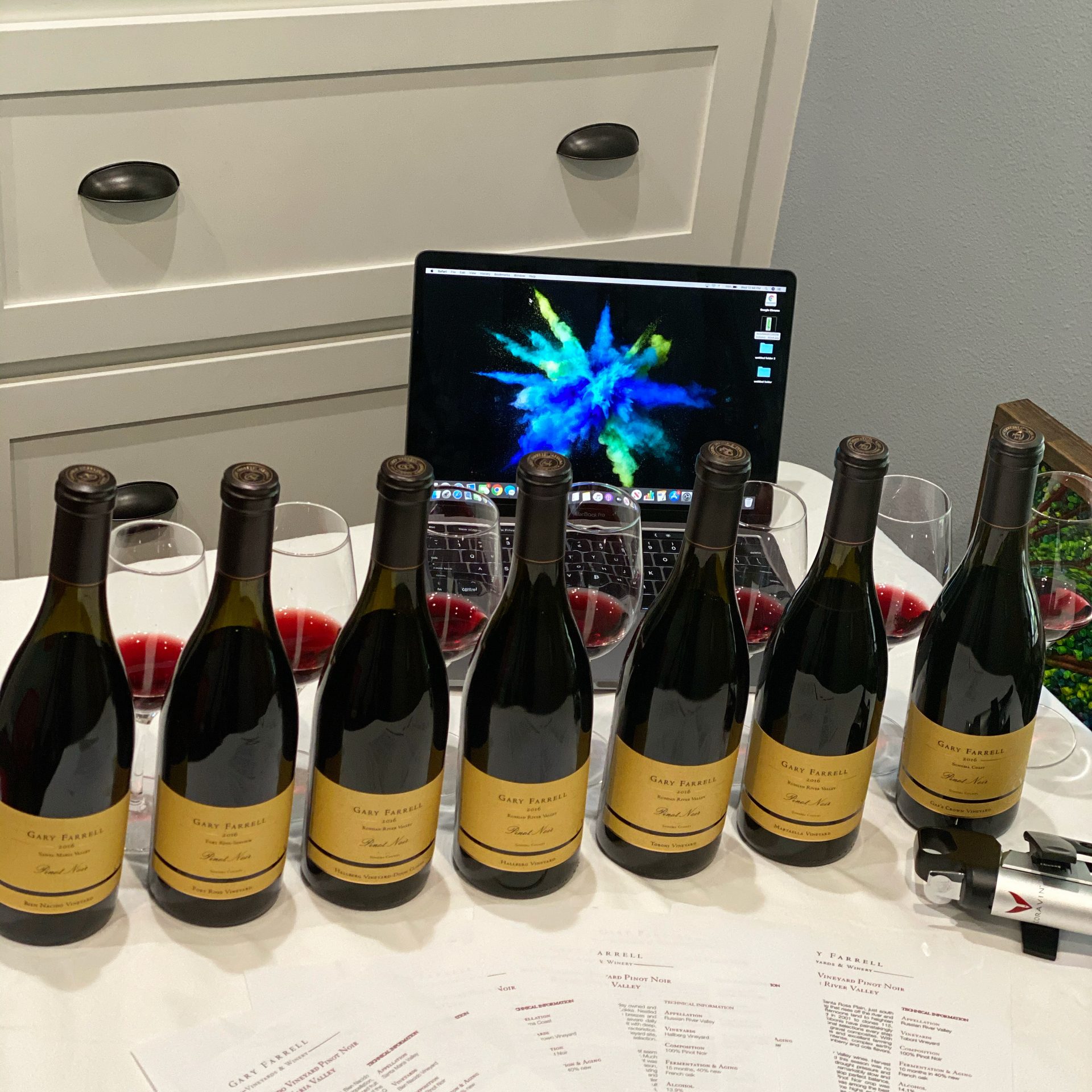
Theresa explained that her intent is for each single vineyard Pinot Noir to serve as an expression of its place. Her winemaking philosophy finds her picking early for ripeness so that the wines ultimately capture site specificity and a sense of place, as well as exhibit the characteristics of each vintage. You won’t find cookie cutter wines that are crafted the same each year. Rather, you’ll find wines that really showcase a sense of place and vintage.
And while they use a variety of clones (don’t worry, I will not go too deep down this technical rabbit hole),3 Theresa shares that the vineyard is the most important thing. In her words, “site trumps clones always.” To that end, Gary Farrell seeks out vineyards that are cool climate, have unique soil characteristics, a particular aspect, amongst other things.4
We tasted the following with Theresa. The first four wines are definitely for the Pinot Noir fans who enjoy a lighter, more Burgundian style of pinot while the last three were bolder and could appeal to those who prefer more robust red wines.
2016 Bien Nacido Vineyard Pinot Noir, Santa Maria Valley
The lone wine from CA Central Coast (though Theresa shares more is coming in the 2017 vintage) is from the Bien Nacido vineyard in Santa Maria Valley from vines planted in 1972. One of the few forays outside of Sonoma, this particular wine serves as a nice counterpoint to all of the other Russian River Valley Pinot Noir wines and may be the most Burgundian in the lineup. Theresa calls this her “sexy spice box” wine and I’ll have to agree as there is a significant spice characteristic to this wine. It’s a classic cool climate wine with up to 20% whole cluster inclusion. Lighter in body and color, this has great mouthwatering acidity, bright and juicy red summer berries, and is quite elegant. It also shows a touch of salinity.
2016 Fort Ross Vineyard Pinot Noir, Fort Ross-Seaview
The second Pinot comes from the Fort Ross Vineyard which is renowned for being the closest vineyard to the Pacific Ocean at around a mile away. This one has a bit more structure than the Bien Nacido but still with high acid levels and overall, a lighter bodied style of pinot noir. The source blocks from this vineyard sit around 1400 -1450 and sit above the fog layer, which provides an ample amount of sun exposure. Overall, the wine provides a nice balance of fruit and savory and is a little more tannic than the Bien Nacido wine. More black fruit (plum and berry) on this one compared to the first as well.
2016 Hallberg Dijon Pinot Noir, Russian River Valley (Green Valley)
Next up were two wines from the Hallberg Vineyard in Russian River and it was interesting to taste the two wines side by side. Of the two, this was the more aromatic in that the aromas jumped out of the glass. This difference in aromatics was attributed to clones (which provided more red fruit) as well as the 20-25% (but can be up to 40% in some vintages) whole cluster fermentation. Obviously made with Dijon clones, it is from the Green Valley sub-AVA which is in close proximity to the Pacific and is very cool. The vines for Hallberg Vineyard are at a lower elevation so they spend a great deal of time drenched in morning fog. The wine is characterized by earthiness, greater tannic structure and a deeper color than the first two wines. Fruit wise, it shows more blue fruit, as opposed to red and black fruit that the first couple of wines showed as well as baking spice.
2016 Hallberg Vineyard Pinot Noir, Russian River Valley (Green Valley)
As opposed to the first Hallberg, this one is a blend of all five clones that Gary Farrell gets. Each clone contributes something unique to the blend. One of the clones used in this wine, the 828, is known for its larger berries and thicker skin which provides for lots of concentration and depth of flavor which is what makes this one taste so different from the Hallberg Dijon wine. This particular wine also has less whole cluster fermentation at around 15-20%. Overall, on the palate this one is more fruit forward (with more black fruit) and bolder but still with some of the characteristic Pinot Noir earthiness. Theresa calls this one a crowd pleaser and I’d have to agree as it has something for Pinot lovers and bold red wine drinkers alike. I’m mean, how cool to taste Pinot Noir from the same vineyard and vintage, but to experience differences based on the particular clones used?
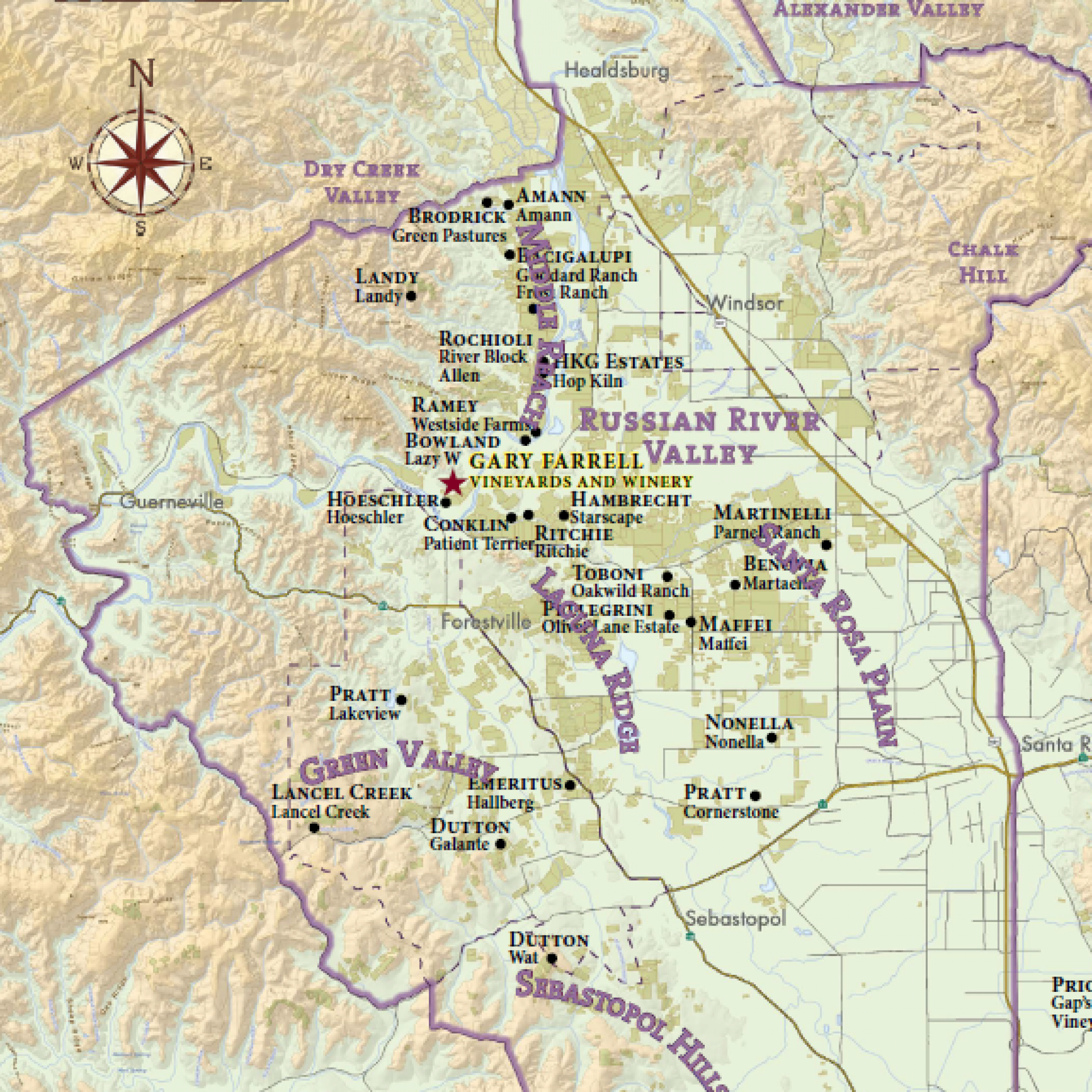
2016 Martaella Vineyard Pinot Noir, Russian River Valley
This was probably my favorite of the lineup as it seemed to nicely straddle old and new world. This one had rich, dense, succulent red fruit and black tea which was supported by nice structure as well as a nice acid backbone that lifts it up. Such a fresh and elegant wine. The wine comes from the Santa Rosa plain in the heart of Santa Rosa which is a little warmer overall. This is a flat region, which allows cool air to settle over the vines. It’s sunny and warm during the day but cool at night and in the early morning hours. Just a texturally beautiful wine.
2016 Toboni Vineyard Pinot Noir, Russian River Valley
Not far from the Martaella Vineyard is the Toboni Vineyard. And though close in proximity, these are two very different wines. With one of the longest hang times for their Pinot Noir, the grapes get a bit riper which leads to richer fruit flavors as well as a higher alcohol level. This is definitely a big wine both structurally and aromatically. Lots of rich, concentrated, supple fruits as well more tannins than the other wines. If you like a little jam and fruit preserves in your wine, this is the one for you. Theresa shared that this is their house favorite out of the tasting room.
2016 Gap’s Crown Vineyard Pinot Noir, Petaluma Gap
From the Petaluma Gap AVA, this was definitely the biggest, boldest, and most dense wine of the lineup. I’d easily pair this with a filet and wouldn’t worry about it holding its own. This is also a wine that could spend more time in the bottle and really show its stuff in a few years. As the Peteluma Gap is a marine-influenced region that sees a lot of wind, the grapes have thicker skins which results in higher tannin wines. Definitely a much more chewy and structured wine. Like the Hallberg wine above, this one includes the 828 clone which has larger berries and thicker skin. But these wines are so very different from each other. Even more interesting is that the Petaluma Gap is a coastal region like Fort Ross Seaview is, but these wines are nothing alike. They are completely on different ends of the spectrum.
It’s quite remarkable to witness the variability in wines that can be made with Pinot Noir and which characteristics are driven by the place in which it grows. Though different, all of these wines showed balance, elegance and purity of varietal expression. With the exception of a small amount of Hallberg and the appellation Pinot Noir (not in our lineup) – which can both be found in various markets – most Gary Farrell wines are available directly from the winery. And if you try any, I’d love to hear your thoughts. Cheers until next time!
- Prior to that, she was the winemaker for Joseph Phelps Freestone Vineyards which is where she gained her expertise working with Pinot Noir and Chardonnay.
- The appellation wine is combination of all the single vineyards and serves as an expression of the Russian River Valley as a whole.
- In a nutshell, Pinot is known as a grapes that mutates. This is why we have Pinot Noir, Pinot Gris, Pinot Blanc, Pinot Meunier, etc. Genetically, these are all mutations of the same variety. The primary difference is the color. With respect to Pinot Noir, there is a lot of talk about clonal selection. This is because the different clones translate to very different tastes and qualities in the wines. Within the black Pinot Noir variety, there are over 1,000 clones which shows just how genetically unstable it is. Some Pinot Noir clones make bold and robust wines while others make delicate, floral, and pale wines. Because there is so much variation in Pinot Noir, it often comes up as a discussion point when discussing these types of wines.
- After the site selection, clonal selection then becomes important. But note that with any clone, the clone will eventually express the characteristics of the place more than it will express the characteristics of the clone itself.

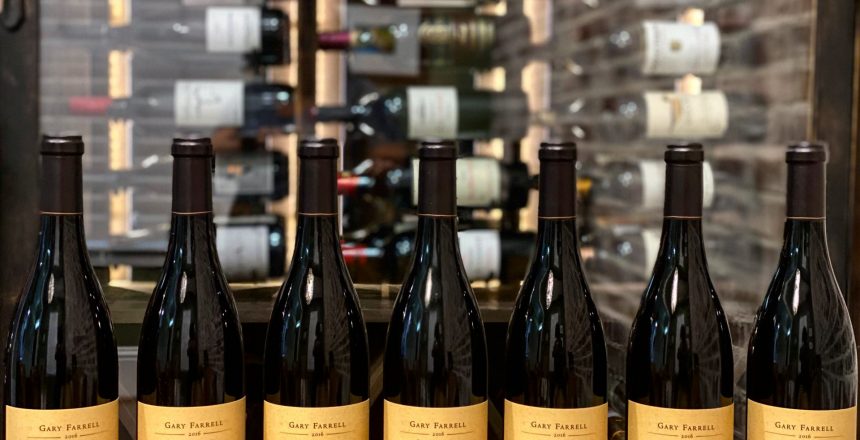
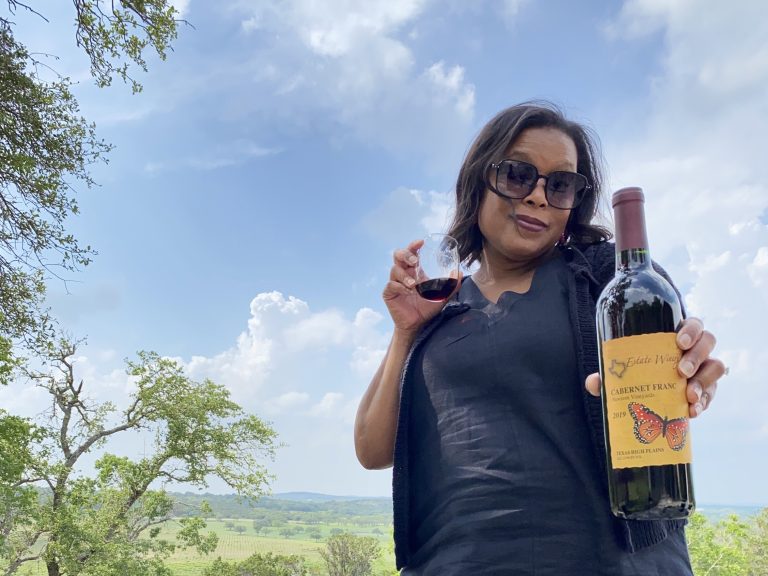

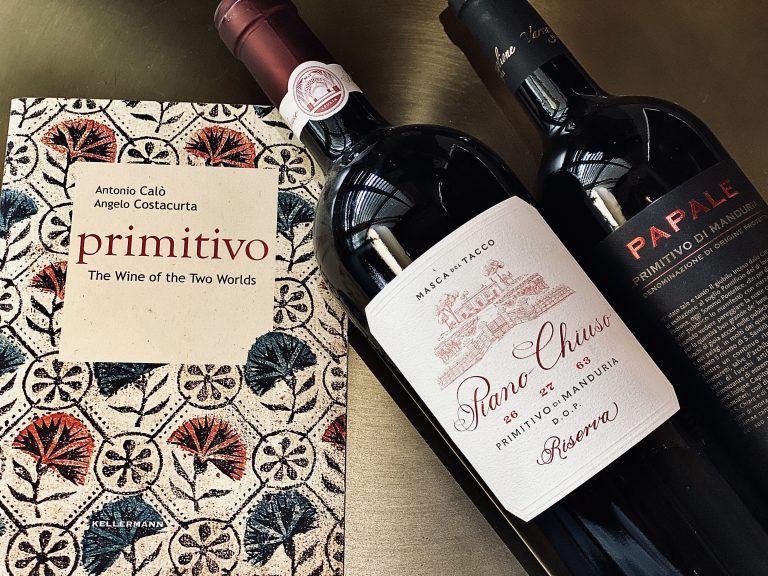

4 Comments
Sam Folsom
•4 years ago
Great piece, Kat! You captured the story and wines beautifully!
Kat
•4 years ago
Thanks. It was quite an eye opening experience.
Jenna Francisco
•4 years ago
The 2016 Martaella Vineyard Pinot Noir was my favorite of the bunch, too! After tasting such variety among those 7 Pinots and hearing about them from Theresa, I’m a huge fan of their wines now.
Kat
•4 years ago
I am too! It was quite an educational tasting of some beautifully made wines. Theresa is definitely gifted.